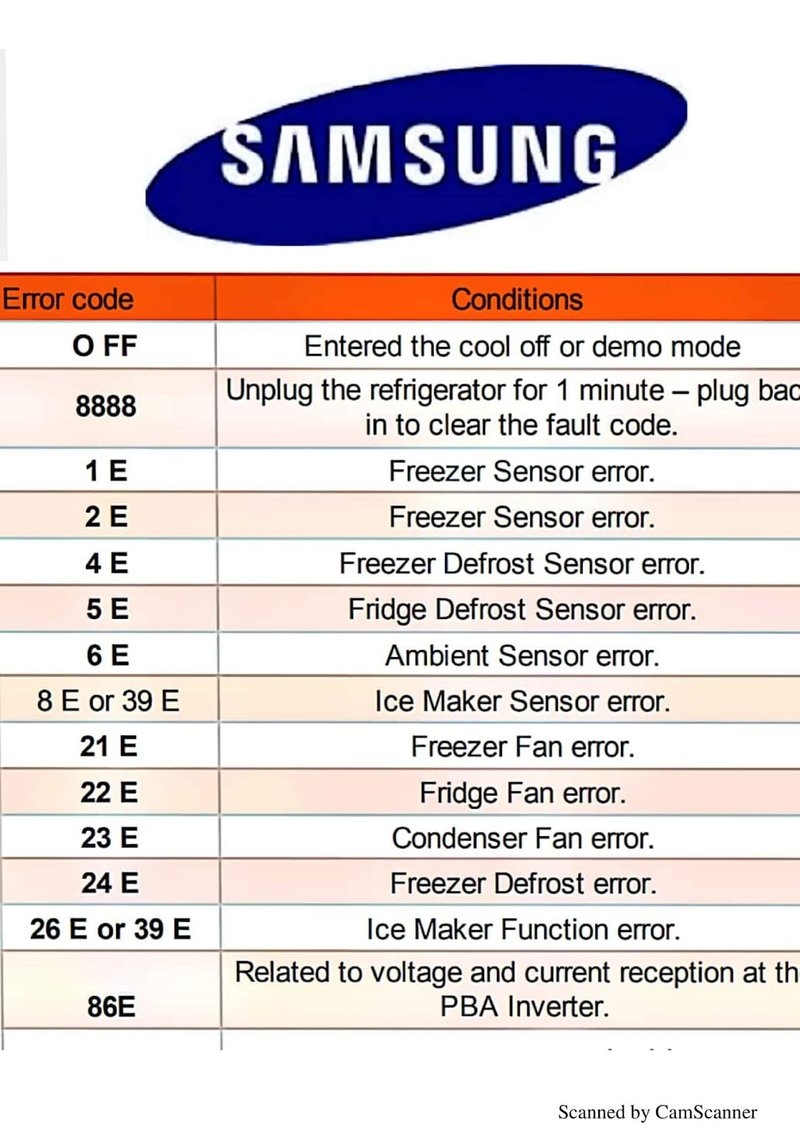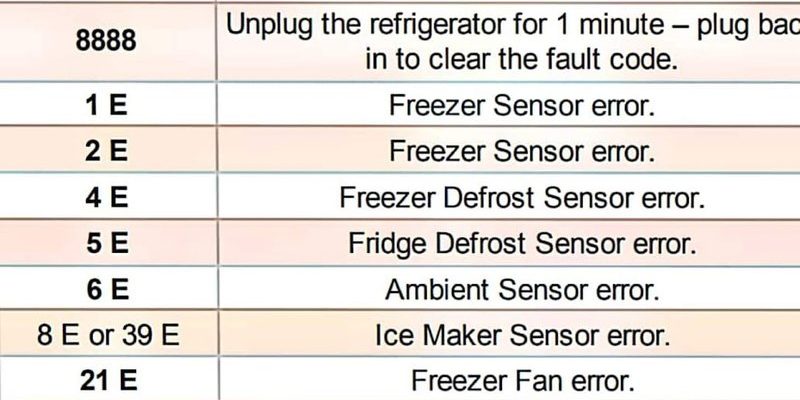
The “SE” error code on a Frigidaire refrigerator typically indicates an issue with the refrigerator’s communication system. It sounds technical, but think of it like this: it’s a bit like when two people are trying to have a conversation over a static-filled phone line. The messages might not get through clearly. In the case of your refrigerator, it’s usually a problem with the user interface board or the connection to the main control board. But don’t worry; diagnosing and sometimes even fixing these issues might be simpler than it sounds.
Understanding the “SE” Error Code
So, what’s really going on when your Frigidaire refrigerator shows an “SE” error code? This code is essentially your refrigerator’s way of communicating a mishap — a communication breakdown, if you will, within its internal systems. Imagine if a conductor’s baton went missing during an orchestra performance; without direction, the music could fall apart. Similarly, the “SE” code suggests a lapse in communication between the different parts of your fridge, often concerning the user interface.
Typically, this error points towards a fault in the user interface board — the part of your fridge that allows you to interact with it. It’s like the control panel in a cockpit, managing all controls and settings. If there’s a glitch in the user interface, it can affect how your fridge operates or responds to your commands. This could be due to a loose wire, a failed board, or even just a software hiccup.
But how do you know it’s the user interface board? You might be wondering if it could be something else. Generally, the SE error tends to specifically indicate this board as the culprit due to failed signals that can’t seem to get where they need to go. That’s why, when you see this code, it usually points technicians directly to this part of your refrigerator’s brain.
Common Causes of the “SE” Error Code
Alright, so we know there’s a communication issue. But what could cause your refrigerator to suddenly start speaking in code? Several common causes could be at play. Firstly, there’s electronics involved, and like any digital device, they can suffer from glitches. Simple power surges, like the kind you might experience during a thunderstorm or if there’s a problem with your home’s electrical system, can be the culprit.
Secondly, there could be a physical issue, much like a loose connector in a stereo system causing the sound to crackle. In refrigerators, this could be a loose or disconnected wire between the user interface board and the main control board. Vibrations from the fridge’s operations over time could sometimes cause these connections to shake loose.
Lastly, sometimes it’s just plain old wear and tear. Over time, parts degrade, and connections can corrode or become damaged. Think of it like an old pair of shoes; eventually, they don’t quite fit right or might even break down despite how careful you’ve been. Similarly, components in your fridge can suffer the same fate.
If you’re experiencing this error, checking these potential causes can be a great place to start. Ensuring a stable power supply, examining the wires for any obvious disconnections, and considering the age of your appliance could help you better understand why this error has occurred.
Steps to Resolve the “SE” Error Code
Faced with the “SE” error code, you might feel a bit like you’re trying to decipher a secret message. But rest assured, addressing this code with a little detective work can be satisfying and, in some cases, straightforward. Here’s how you can tackle it:
First things first, try a simple reset. Just like restarting your computer can solve a lot of issues, turning off your refrigerator for a few minutes might reset the communication systems and clear the error. Unplug the fridge or switch it off at the circuit breaker, then wait about five minutes before turning it back on. This can often clear minor glitches.
If a reset doesn’t do the trick, you’ll want to take a look at the refrigerator’s connections. Carefully check both the user interface and main control board for any visible signs of damage or loose wires. Handle these parts with care, as they are delicate. By ensuring all connections are snug and in place, you might resolve the communication issue that’s causing the “SE” code.
Should these steps not resolve the issue, it could be time to call in a professional. Sometimes the problem may be deeper, requiring the expertise of a technician who can test components and replace the user interface board if necessary. They’re equipped with the tools and knowledge to dig deeper into your fridge’s operations.
Preventing the “SE” Error Code in the Future
Prevention, as they say, is better than cure. So, how can you stop that pesky “SE” error code from haunting your Frigidaire refrigerator again? Well, the good news is, with some easy upkeep, you can minimize the chances of it reoccurring.
A great starting point is ensuring stable power. Consider investing in a surge protector specifically for your refrigerator, safeguarding it against sudden electrical spikes. It’s like giving your fridge its own little shield against power disruptions that could cause errors.
Regular maintenance can also make a world of difference. At least once a year, conduct a thorough checkup of your refrigerator. This doesn’t need to be anything fancy. Simply inspect the connections and the internal components for signs of wear and tear. Keeping things clean and ensuring all parts are in good condition can save you a lot of headaches down the line.
Lastly, remember to update your knowledge on your appliance. Frigidaire, like many manufacturers, might release updates or guidance for their products. Staying informed means you’ll know exactly what to do should an error code flash on your fridge’s display again. With these proactive steps, you’ll keep your fridge running smoothly and your kitchen in order.
